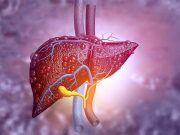Tag: Cholesterol: Dietary
Antidepressants Vary Significantly in Cardiometabolic Effects
Clinically significant differences between antidepressants in terms of metabolic and hemodynamic effects
2015 to 2024 Saw Increase in Testing for Lipoprotein(a)
Increase reported in annual number of tested patients and percentage of total patient population tested, reaching 0.24 percent in 2024
Only 36.4 Percent of U.S. Adults Had No CVD Risk Factors in Recent Years
Higher percentage of men than women had two or more CVD risk factors; more older adults had risk factors
Three Cardiometabolic Risk Factors ID’d as Having the Highest Risk for Mortality in MASLD
Greatest risk for mortality seen with high blood pressure, glucose intolerance, and low high-density lipoprotein cholesterol
Low, High HDL Linked to Risk for Age-Related Macular Degeneration
LPA was identified as a novel single nucleotide polymorphism that is associated with increased risk for AMD
Lipoprotein(a) Levels Tied to Increased Risk of Recurrent Atherosclerotic CVD Events
Deleterious effect of lipoprotein(a) ≥180 nmol/L possibly mitigated by high-impact LDL-cholesterol-lowering therapy
Combination Lipid-Lowering Therapy Linked to Greater Drop in LDL-C
Greater reduction seen in LDL-C; reductions also seen in all-cause mortality, major adverse CV events, stroke incidence
Olpasiran Leads to Significant Reduction in Oxidized Phospholipids
Olpasiran leads to significant and sustained reduction in OxPL on apolipoprotein B
Decline in BMI, Waist Circumference Seen in Decade Before Dementia
Dementia cases had lower BMI and waist circumference and faster declines; HDL levels generally higher predementia
Elevated HDL Cholesterol Linked to Increased Risk for Glaucoma
Elevated LDL cholesterol, total cholesterol, triglycerides linked to reduced risk for glaucoma














